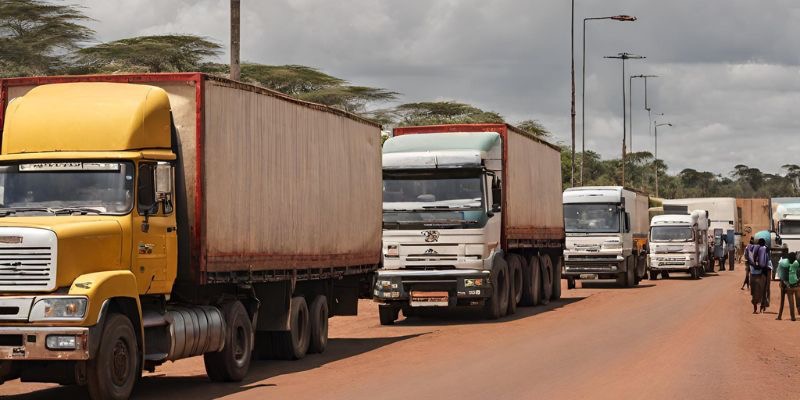
Ministers from the Northern Corridor have requested that Tanzania unlock the transit highway
The transporters operating between Mombasa and Bujumbura have not fully taken advantage of the Voi-Taveta/Holili-Arusha-Singida road network, which is a crucial portion of the main road connecting the two cities. This is because Tanzania has been slow in implementing the geofencing system for the Arusha-Singida section.
A road is considered geofenced when it is equipped with inspection stations and enables electronic tracking of cargo for the purpose of taxation and prevention of illegal dumping of products.
Geofencing provides protection against theft and the potential loss of cargo during transportation.
The 1,545km highway was finished in 2018 with the purpose of decreasing the travel distance from Mombasa to Bujumbura on the Northern Corridor by 358 kilometers.
The purpose of the East African Community (EAC) Regional Road Network Program is to enhance the transportation of goods from Arusha to other EAC member nations in the Great Lakes region.
Truckers are accusing the Tanzania Revenue Authority (TRA) of being negligent in implementing geofencing measures on the road. However, other analysts attribute this issue to the fierce competition for business between the ports of Mombasa and Dar es Salaam.
The Kenya Revenue Authority (KRA) has implemented geofencing on the Voi-Taveta side.
If the corridor enhances operational effectiveness, importers and exporters in certain regions of Tanzania, Burundi, and DRC may opt for Mombasa over Dar es Salaam as their preferred port.
“We are currently facing a dilemma due to the intense competition among regional ports for business. This is the reason why we are unable to transport goods beyond the Taveta One-Stop Border Point. If we were to do so, the goods would not be monitored and could potentially be classified as stolen,” clarified Hamisi Juma, a transporter based in Mombasa.
The Northern Corridor Council of Ministers has formally requested Tanzania to grant permission for cargo destined for Burundi, Rwanda, and the Democratic Republic of Congo (DRC) to transit via its borders. This request aims to expedite the transportation process and decrease associated expenses.
In a recent meeting in Kenya, the ministers issued a joint communique stating that they have instructed the secretariat of the Northern Corridor Transit and Transport Coordination Authority (NCTTCA) to take action in order to encourage the utilization of roads in Tanzania that connect Burundi, Rwanda, and the Democratic Republic of Congo (DRC) through Taveta to the Port of Mombasa.
“According to the council, chaired by Uganda’s Works and Transport minister Katumba Wamala, this will result in a decrease in transport costs and an increase in Mombasa Port throughput.”
By opening access to transit goods carriers, vehicles heading towards the Northern Corridor will be able to reduce their trip distance by 23 percent. Previously, these trucks had to take the lengthier route from Mombasa through Uganda to reach Rwanda, Burundi, and DRC.
The East African Community Customs Union mandates the utilization of the Regional Electronic Cargo Tracking System to monitor the movement of imported goods by trucks.
At present, truck drivers that choose the shorter Taveta-Holili route are required to provide a “bond” for their goods at the Mombasa port. They must then submit this bond at the border, wait for its cancellation, and then establish another bond for Tanzania. This entire process takes a minimum of three days.
“Therefore, it is crucial to implement a geofence for the section starting from Holili,” stated Omae Nyarandi, the executive secretary of NCTTCA.
“There is a segment of approximately 21 kilometers that has not been enclosed within a geofence.”
Other initiatives aimed at reducing congestion at Mombasa port have been implemented, including as the establishment of the Voi dry port in Taita-Taveta County.
The establishment of the dry port is expected to enhance the transportation of goods to Tanzania and Burundi via the Holili Singida-Kobero border, ultimately reaching Bujumbura.
Heztech Engineering Ltd was granted a contract to conduct a feasibility study for the port, which will have the additional advantage of benefiting local residents and reducing transportation costs to northern Tanzania and Burundi.
All Categories
Recent Posts
Tags
+13162306000
zoneyetu@yahoo.com



